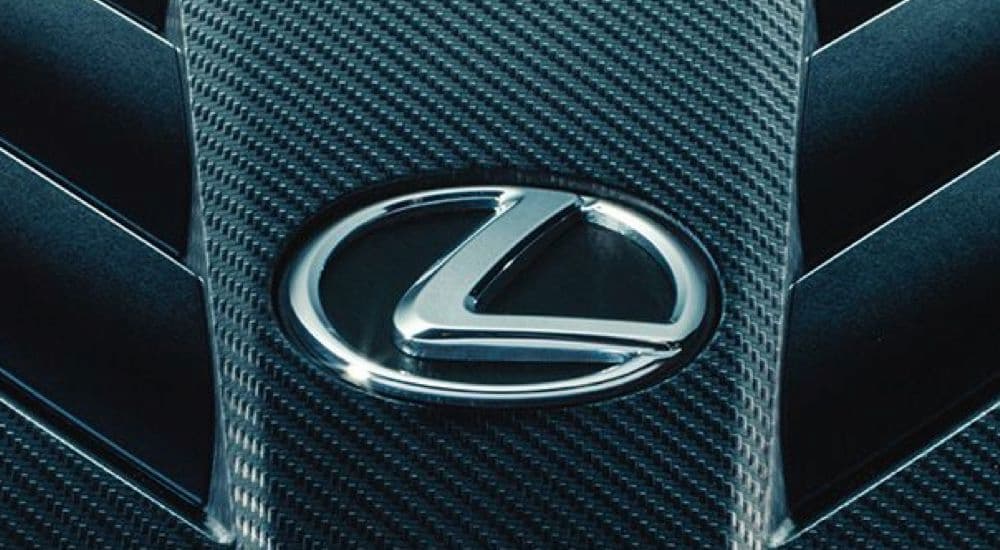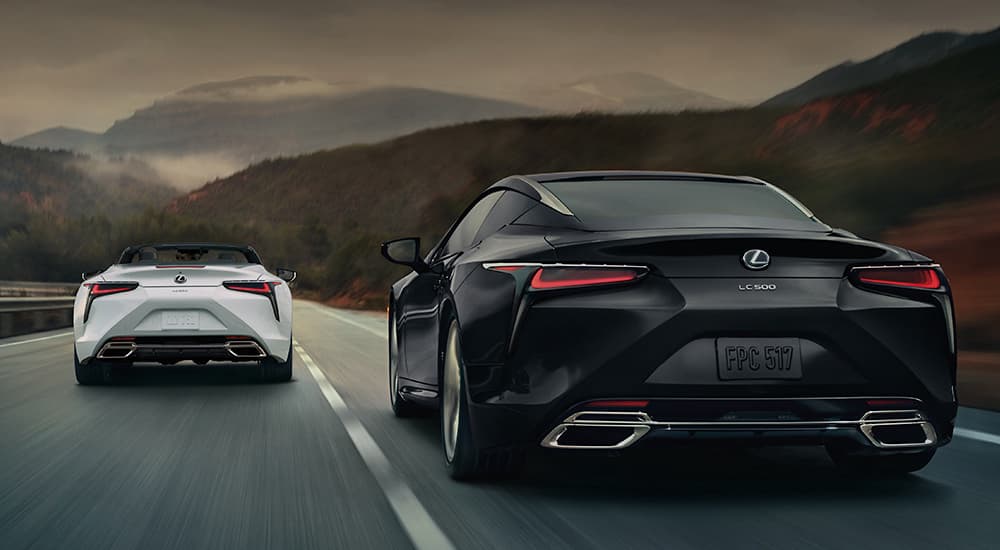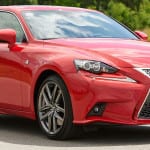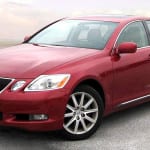The Lexus nameplate is one of the world’s most-recognized luxury automotive brands. Since the first Lexus vehicles were sold in 1989, following six years of development, they have earned a reputation for excellent quality, comfort, and a painstaking production and quality control process to ensure every single part meets their standards. To this day, the manufacturer’s worldwide motto is “The Pursuit of Perfection.”
When you go to a used Lexus dealership, you’ll find a lot of classic models to choose from. From the original ES and LS sedans to newer machines like the LC coupe or the fondly remembered Lexus GS, their designers consistently set the bar. You’ll find a transformation in the types of vehicles bearing the Lexus badge. Over the decades, they’ve gone from primarily a sedan manufacturer to a leader in crossover SUVs, sports cars, hybrids, and more. The vehicles’ appearance has changed notably over time, too.
Every manufacturer can be expected to evolve, but the difference between Lexus’s evolution from two decades ago to the present is fascinating to any auto enthusiast. This retrospective traces the recent history of Lexus to see how they have changed and, just as importantly, the vehicles that signified these changes.
The 1990s: Improving on Existing Designs
The focus of Lexus during its early days owes part to the brand’s origins. As Matthew May wrote in his 2007 book The Elegant Solution: Toyota’s Formula for Mastering Innovation, Lexus was born of the Flagship One (F1) project, which started in 1983 with the goal of building the perfect car that could be sold worldwide. It was also born of necessity. Honda and Nissan launched their Acura and Infiniti luxury brands in the 1980s, and Toyota saw the need to do the same.
The result was the Lexus LS 400 full-size luxury sedan and the ES 250 entry-level executive sedan, which combined classic elegance with modern performance and technology on a proven platform. For the first decade of Lexus, this was the undisputed modus operandi of Lexus. They developed other variations on these sedans, as well as new models such as the Lexus GS 300 sport sedan, the SC 300 sport coupe, and the LX 450 SUV. But Lexus wasn’t reinventing the wheel, so to speak. The approach was to take popular vehicle segments and make them better. The buying public certainly responded. In 1998, Lexus became the world’s best-selling luxury vehicle brand.
The Lexus RX 300: A Landmark SUV
Although you can’t always point to a specific vehicle as evidence of when a manufacturer started to shift their approach and focus, you can with Lexus. The 1999 model year saw the debut of the Lexus RX 300. This was the world’s first luxury crossover SUV, changing what was possible in the SUV segment.
Before then, SUVs were based on truck chassis. These big, hulking vehicles thrived off-road but had to be manhandled on-road. The Lexus RX 300, together with its non-luxury sibling the Toyota RAV4, are considered the first SUVs to drive like cars. You likely wouldn’t be taking the RX 300 to a remote trail, but if you needed a large, ultra-comfortable, and smooth-riding vehicle to bring kids to soccer practice or load up for a vacation, this was it.
The vehicle quickly made an impact. MotorTrend gave the Lexus RX 300 its first Sport Utility Vehicle of the Year award, and Lexus sold more than 40,000 units in the first year. Two decades later, MotorTrend paid the ultimate tribute by saying that driving an original RX 300 still felt normal today, which shows just how far ahead of the time it was.
The 2000s: Sports Cars and Hybrids
The Lexus RX 300 kicked off what former Lexus International Executive Vice President Mark Templin called the second phase of Lexus. While the first phase of the 1990s was about building up the brand and making it a serious contender, the second phase was about introducing new vehicles, expanding into new segments, and showcasing the future of automotive design.
New Lexus models were popping up left and right throughout the 2000s. Among the highlights, 2001 brought the first Lexus convertible with the SC 530, and 2002 brought the GX 470 midsized luxury SUV. Then, in 2005 and 2006, Lexus debuted the first two hybrid luxury vehicles based on their RX and GS lines, showing that elegance could be eco-friendly, too.
Perhaps the most out-of-the-box vehicle during phase two, though, was the Lexus IF S. Debuting in 2008, this was the nameplate’s first true high-performance sedan, taking aim directly at Mercedes AMG and BMW’s M cars rather than only the Japanese competition as in the past. The IF S was armed with a 416-horsepower V8 engine, a transmission with near-instantaneous shifts, Brembo brakes, and other features. The car was even tested on legendary tracks like Nurburgring and Laguna Seca. Combined with a 500-unit run of the Lexus LFA supercar in 2011 and 2012, this “muscle with class” showed that Lexus was now more than just a vehicle for CEOs.
The 2010s: A Bold New Direction
Lexus announced its third phase at a 2012 NAIAS (North American International Detroit Auto Show) press conference. Their new goal became creating driver-focused vehicles in designs that would inspire the owner and forge an emotional connection. This meant introducing more models and redesigning the existing lineup for better driving dynamics, more advanced technology, and unique styling cues, such as an updated spindle grill and character lines.
The coming years saw the fruition of these efforts with vehicles like the RC F performance coupe, the GS F performance sedan, and the LC 500 luxury coupe. Classic Lexus models got an overhaul, too. In 2017, the fifth generation of the venerable Lexus LS packed a twin-turbo V6 engine with 415 hp, a longer wheelbase, and an available sport-tuned suspension. The same year, the Lexus RX 350 became the company’s first SUV with available third-row seating, enabling up to eight people to enjoy a ride. Increased size was part of the trend, with other vehicles like the RX 300 becoming longer and wider. Lexus vehicles were bigger and more brash than ever while remaining committed to The Pursuit of Perfection.
The Road Ahead: What’s Next for Lexus?
To drive a Lexus today is almost like driving a different vehicle than 20 or 25 years ago. After establishing its foundation as a premier luxury manufacturer, Lexus has brought its premium styling to sports cars, performance sedans, SUVs, and pretty much every other type of popular vehicle. Its tried-and-true vehicles, while maintaining the soul of the brand, have also put more emphasis on offering the driver a true experience rather than a mere possession. Having reached 10 million total vehicle sales in 2019, their approach has certainly worked.
The next question becomes where Lexus goes from here. Based on a 2020 study they conducted, it seems their current approach is the correct one. The findings found that Americans are expected to increasingly identify luxury with experiences over belongings, particularly younger Americans in the age 21 to 38 demographic. They also found that people want more ways to personalize their luxury vehicles and increasingly see them as a place where they can occasionally unplug from their digital devices.
The philosophy of luxury as an experience is key. The definition of luxury as goods is constantly changing. After all, the vehicle itself was once considered a luxury, as were smartphones and running water. But the concept of luxury as an adventure and a feeling is timeless. Whether you’re talking about a new Lexus LS or a used Lexus GS, this is the mindset that drives each vehicle.





